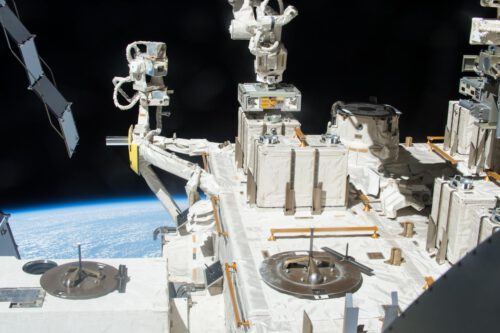A Japanese experiment on the space station tested whether bacteria can survive in space conditions and transfer life from one planet to another

Imagine microscopic life forms, like bacteria, flying through space and landing on another planet. The bacteria that have found suitable conditions for their survival will then be able to start multiplying again, stimulating life on the other side of the universe. This theory, known as panspermia, favors the possibility that bacteria may migrate between planets and spread life in the universe. This theory, which has been disputed for many years, implies that the bacteria will survive the long journey in outer space, and will withstand the vacuum conditions and temperature fluctuations in space.
"The origin of life on Earth is humanity's greatest mystery. On this topic, scientists have completely different points of view. Some believe that life is very rare and was created only once in the universe - on Earth, while others think that life can be created on any suitable planet. If panspermia is possible, life must be spread over many more worlds than we previously thought," says Prof. Akihiko Yamagashi, a professor at the University of Tokyo in the Department of Life Sciences and principal investigator of the Tanpopo space mission.
In 2018, Prof. Yamagishi and his team tested the presence of bacteria in the upper layer of the atmosphere. Using aircraft and scientific balloons, the researchers found dinococcus bacteria floating 12 km above the earth. But while it is known that bacteria of this species form large colonies (larger than one millimeter in size) and are resistant to environmental hazards such as ultraviolet radiation, the question arises, can they withstand space conditions long enough to confirm the possibility of panspermia?
To answer this question, Prof. Yamagashi and Tanpopo's team tested the survival of the bacterium Dahinococcus, which is known to withstand strong radiation - in space. The research, now published in Frontiers in Microbiology, shows that large enough colonies can provide sufficient protection for bacteria to survive for several years in the harsh space environment.
Dr. Yamageishi and his team reached this conclusion by placing colonies of dried Dianococcus bacteria on exposure panels outside the International Space Station. The samples of different thicknesses were exposed to a space environment for one, two or three years and then tested for their survival.
After three years, the researchers discovered that all the colonies with a diameter larger than 0.5 mm partially survived in the space conditions. The observations show that while the bacteria on the surface exposed to the space died, a protective layer was created for the bacteria below that ensured the survival of the colony. According to the survival data for exposure of one, two and three years, the researchers estimated that a colony with a thickness greater than half a millimeter would have survived between 15 and 45 years on the International Space Station. The design of the experiment allowed the researchers to predict that a colony with a diameter of 1 mm could survive up to eight years in the conditions of outer space.
Prof. Yamagashi says, "The results show that the dinococcus bacteria can survive during a flight from Earth to Mars and vice versa, a flight that lasts months to years."
This study provides the best estimate to date of bacterial survival in space. And although previous experiments prove that bacteria can survive in space for a long period of time when they benefited from protection inside a rock (i.e. lithopspermia), this is the first long-term space study that raises the possibility that bacteria could survive in space in the form of colonies. The researchers called it "massapanspermia". However, while we are one step closer to proving panspermia theory, the ability of bacteria to move in space also depends on the launch and landing processes during which they also have to survive.
For a message from the Japanese Space Agency
More of the topic in Hayadan:

2 תגובות
These are the limitations of the experiment, and we are talking about specific bacteria.
can survive much further than that.
And where do you think we came from?